Is the Don Draper look dead? How adland dresses for business success today
As part of The Drum’s Fashion & Beauty Focus, this week’s installment of Agency Advice asks agency leaders if they still enforce a dress code. Plus, we check out some of the latest looks from adland.
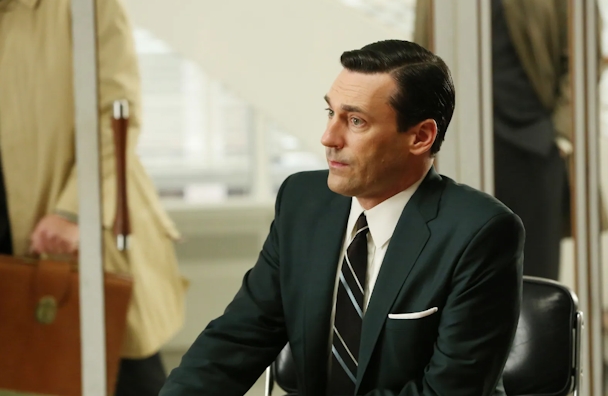
Is the Don Draper look gone forever in adland?
When this marketing journalist first began visiting agencies in 1998, pressed white shirts, yellow power ties and boring blue blazers with gold buttons were all the rage. Not so much in creative departments, where creatives were always afforded more latitude when it came to their attire, but in the office, from the MD down to the account executives, smart business suits, skirts, blouses and ties were very much de rigueur.
Not any more. When was the last time you encountered a yellow power tie in an agency? So, as The Drum focuses on fashion, we started asking – do dress codes still exist anywhere in agencyland? Do agency bosses still insist on smart casual for business meetings and pitches, or do they prefer that their people express themselves? Judge for yourself.
Want to go deeper? Ask The Drum
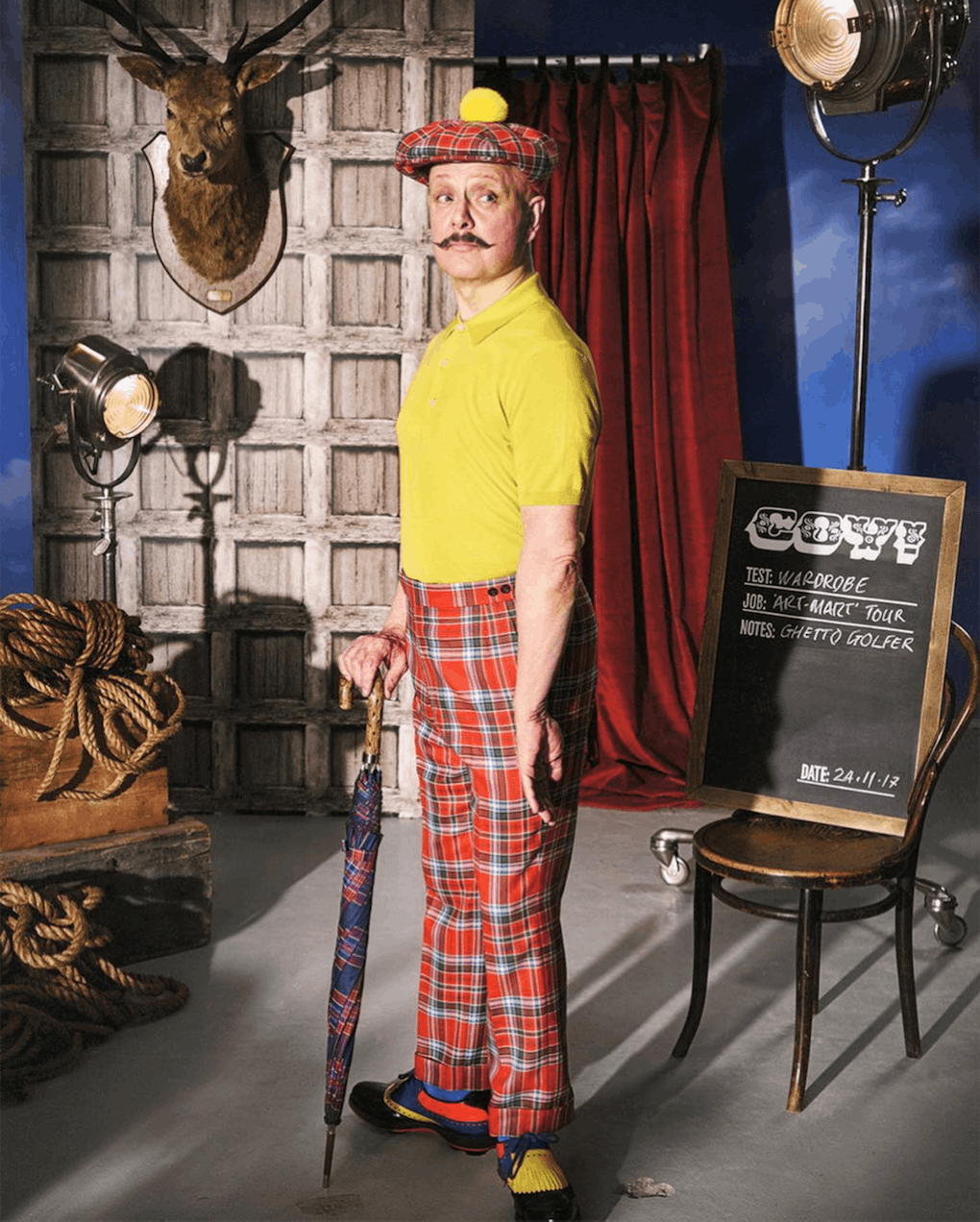
Mark Denton, creative director, Coy: “When I go to meetings at advertising agencies nowadays, I struggle to work out who’s who by their outfits alone. Back last century, it was more straightforward. The account group was smart and their creatives were scruffy. Easy. Things have definitely changed now and, generally, it’s all a bit more informal. Yes, you can still spot the occasional suit, but it’s getting rarer.
“Me, I like a suit and tie. I design my own and get them tailored to my own exacting specifications, but I also like a boldly checked ‘cheese cutter’ with a brightly colored pom-pom, teamed with matching ‘magic’ trousers (I get them made too, by the way).
“For days when I’m feeling a tad more relaxed, I slip into one of my ‘Dento’ tracksuits (my current favorite is a little Black Watch tartan number with real gold embroidered accents). Or, for those occasions when smartness is required but without too much formality, then I’ll select one of my many Tween (tweed/jean) leisure suits. Excellente. Anyway, let me tell you about my sock drawer…”
Advertisement
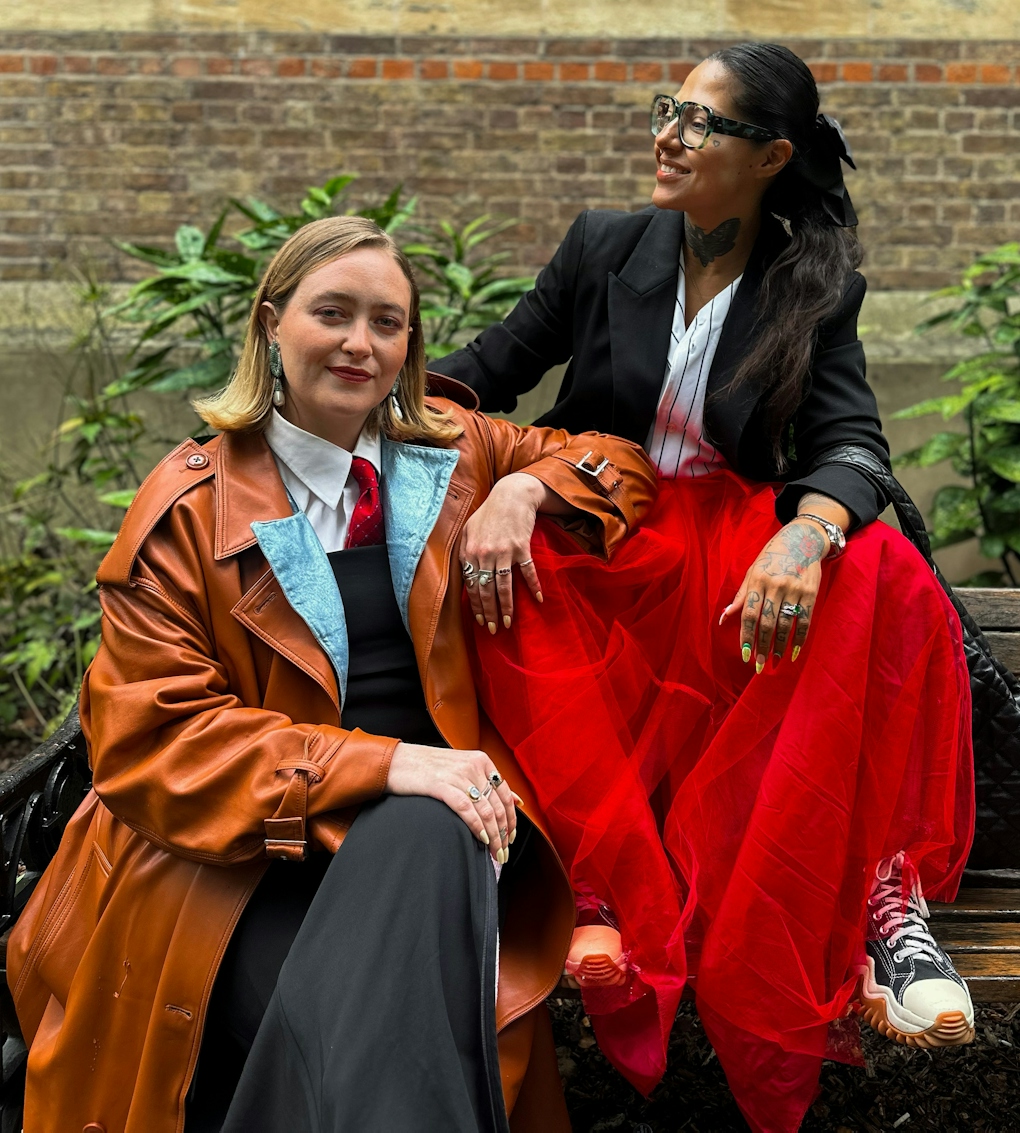
Louisa O’Connor, MD, Seen Presents: “We work in a creative industry – diversity of person, diversity of thought equals diversity of creative and that’s what keeps things fresh. If I hired replicas of me, our work would soon become stale. We have goths, people with tattoos, mods, people who take inspo from the 50s… I love coming into our office and seeing the eclectic mix of people.
“For me, I don’t care what you look like, I care what comes out of your brain and out of your mouth and I think our clients respect that too, as long as we are respectful in how we look and do our job well. We have so many fashion-conscious people in our team it would be difficult to pick just one, but I think designer Jan Walsh and project manager Grace Romero (pictured above) represent our policies the most.”
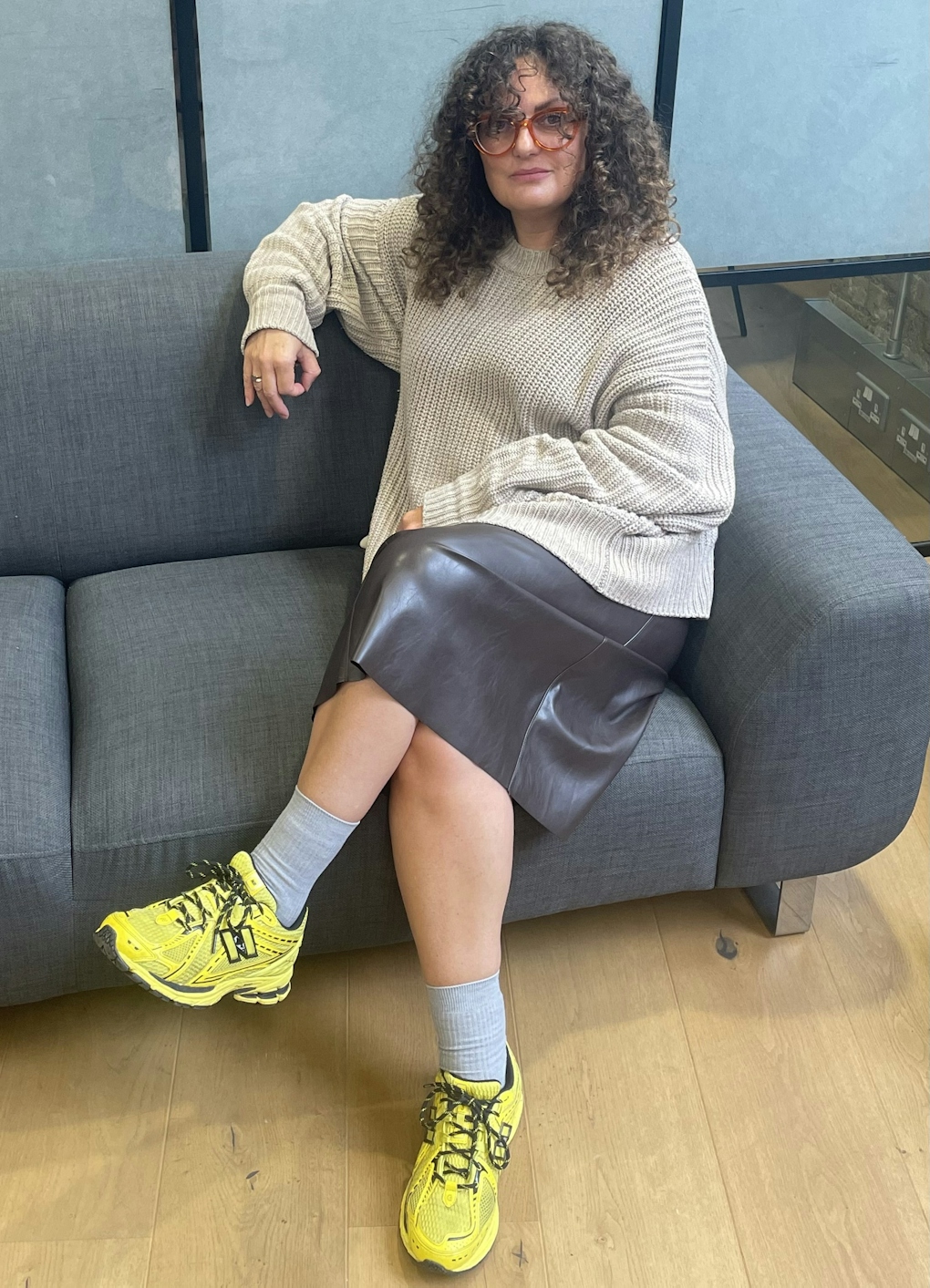
Belinda Turffrey, associate director, Shook: “We work in a creative industry and what’s more creative than how you choose to present yourself? In the words of Madonna, 'Express yourself, don’t repress yourself.'
“Workplace dressing is wildly different from when I started in PR. Back in the day, I got shouted at for wearing a hoodie to work (apparently, it didn’t set the right tone), whereas now no one would bat an eyelid.
“I’d like to think that now people are encouraged to come into work wearing whatever they feel comfortable in, expressing their real selves – be that a sleeve of tattoos, multiple piercings, a sharp shoulder pad or a cape.
“Someone’s quality of work isn’t impacted if they have a prominent neck tattoo, but being asked by an employer to cover it up probably will. Obviously, there are times when you might need to dress for the job or location at hand, but you can and should still be you.
“My mood usually dictates my work attire approach – I’m a lover of a bright trainer, believe nice socks are essential and this week’s favorite outfit is a fake leather brown pencil skirt with a silver kitten heel – make of that what you will.”
Advertisement
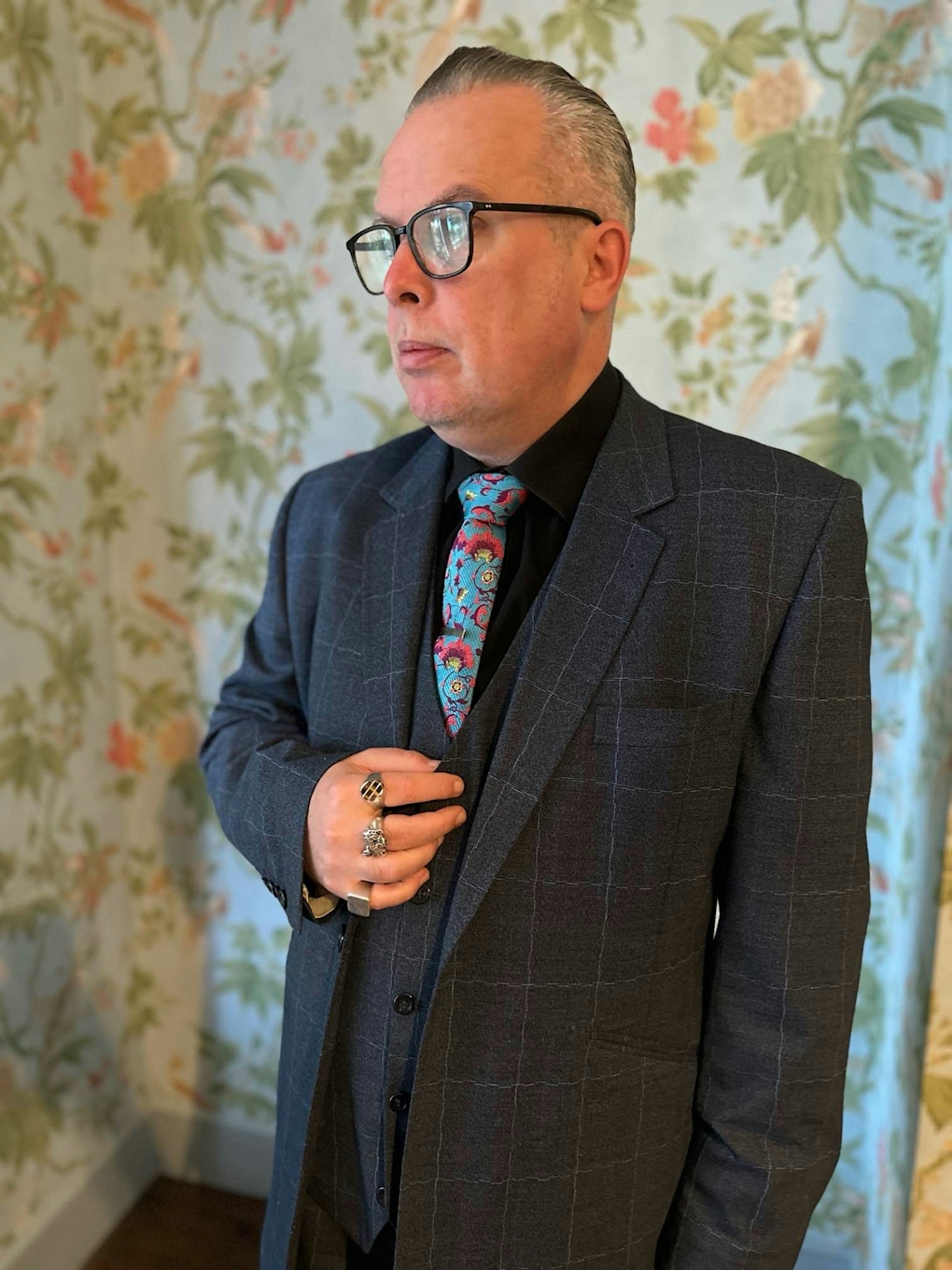
Simon Moore, freelance creative director: “Nobody in any type of creative industry should be compelled to adhere to a dress code and I’ve never come across one; after all, it’s not school (if it were, I’d be in a pair of Farrah’s and a Slazenger jumper).
“Sometimes it looks like there’s a uniform – beard, selvedge denim, Vans etc – and this is partly why I consistently wear a suit and tie; it’s what nobody else is wearing (I’ve never wanted to look like other people). Also, I just like the look and, as Nick Cave once said, ‘Choices are limited… It’s important not to have to make many decisions in the morning.’
“I have many rules (shorts are only for the beach, over 30 degrees to wear short-sleeved shirts, etc), but they’re my rules; they’re not imposed upon me. I mostly find fashion banal, but I’m always intrigued by people who have a very clear style.”
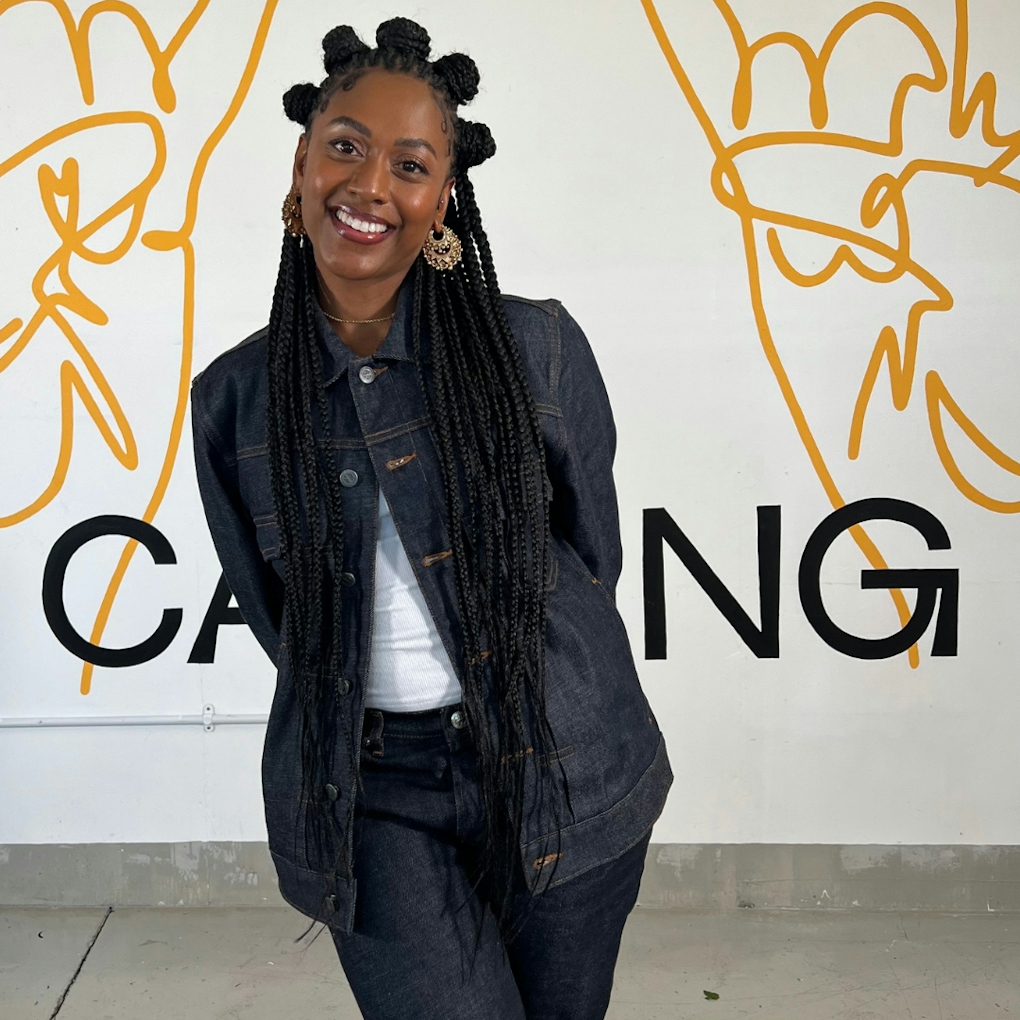
Rani Patel, founder & MD, Calling: “I’ve always hated this idea of dress codes in the way it dictates a kind of uniform for how individuals should look. It distorts people’s self-image, the complete opposite of embracing diversity. Dressing is a form of creative self-expression and everyone should have the right to that without being policed.
“At Calling, we are all a bit fashion-obsessed; everyone is encouraged to dress however they feel comfortable. We say if you feel good, you look good. We admire and are inspired by each other’s style – something I didn’t experience growing up in the industry. My style, hair and even nail color would often become a point of ridicule and would impact my confidence to express myself authentically.
“The idea that suits should wear suits is very dated, in my opinion. I get the reasoning; people may take you more seriously, knowing you’re the boss. Ha!? But wearing a suit can also feel intimidating for clients and colleagues. It can often feel like a disguise. At the helm of Calling, the only suit you’ll find me in is a denim one.”
Suggested newsletters for you
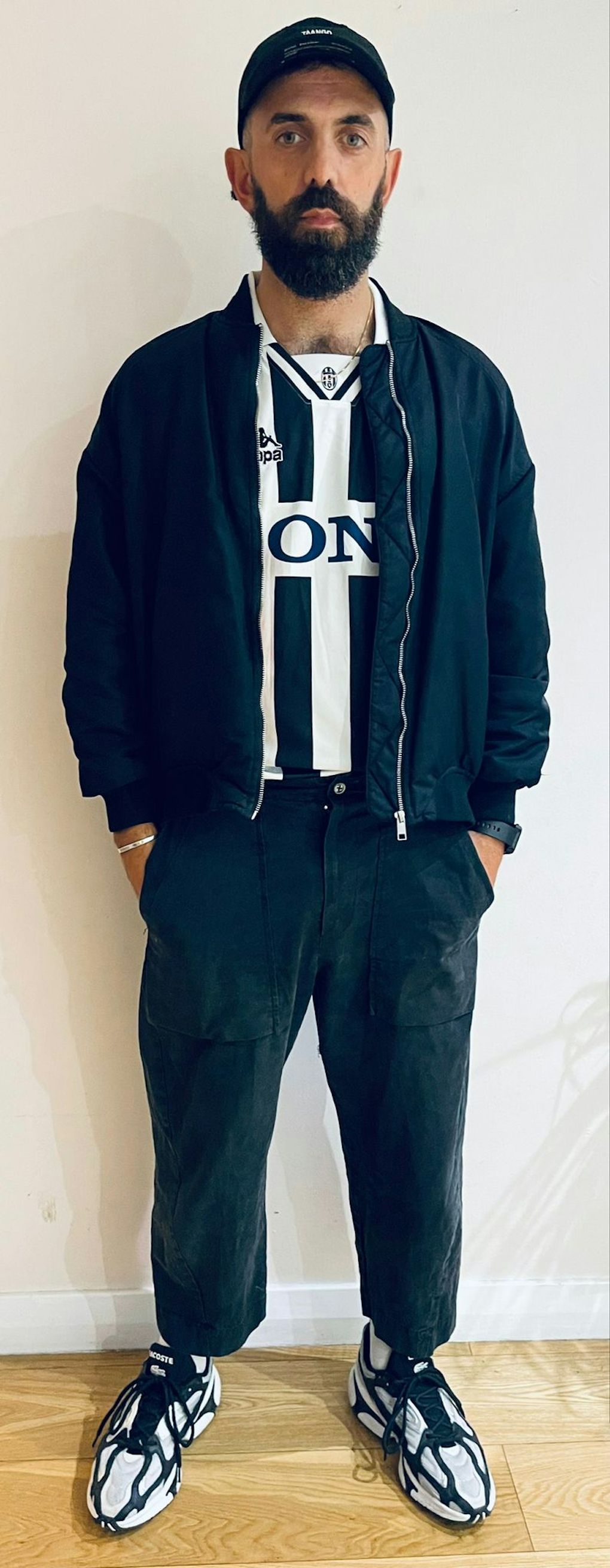
Julian Cirrone, creative director, Brands2Life: “If you appreciate that diversity of thought is one of the most powerful tools any agency can have, then we cannot be selective about which part of a person’s identity shows up to the office. A person’s individual sense of style makes up who they are, so why wouldn’t you want them to show up in what makes them feel confident?
“Brands2Life has a smart or casual dress code for the office for that reason and hasn’t set policies for tattoos or piercings either because we’re more interested in their talent and expertise - actually, that’s a lie, we’re also interested in their tattoo artist recommendations!
“When it comes to client meetings and pitches, the framework moves into more of the smart but it will always be at the discretion of the individual and, of course, what is appropriate for the client. I haven’t worked at an agency that mandated suits, and I wouldn’t want to, but I do remember working at a few agencies that, for new business pitches, wanted the pitch team to wear the colors of the brand we were visiting like it was some subconscious way of appearing as ‘one of them’ and the secret winning ingredient that’ll clinch the client. It always felt cringe and, thankfully, we’ve moved on from those days.
“I’m a quietly confident individual and my attire reflects that. I’ve amassed an entirely monochrome wardrobe over time from indie labels that blur the line between smart and casual because that’s what I like and feel confident in. Oh, and caps. Lots of caps.”
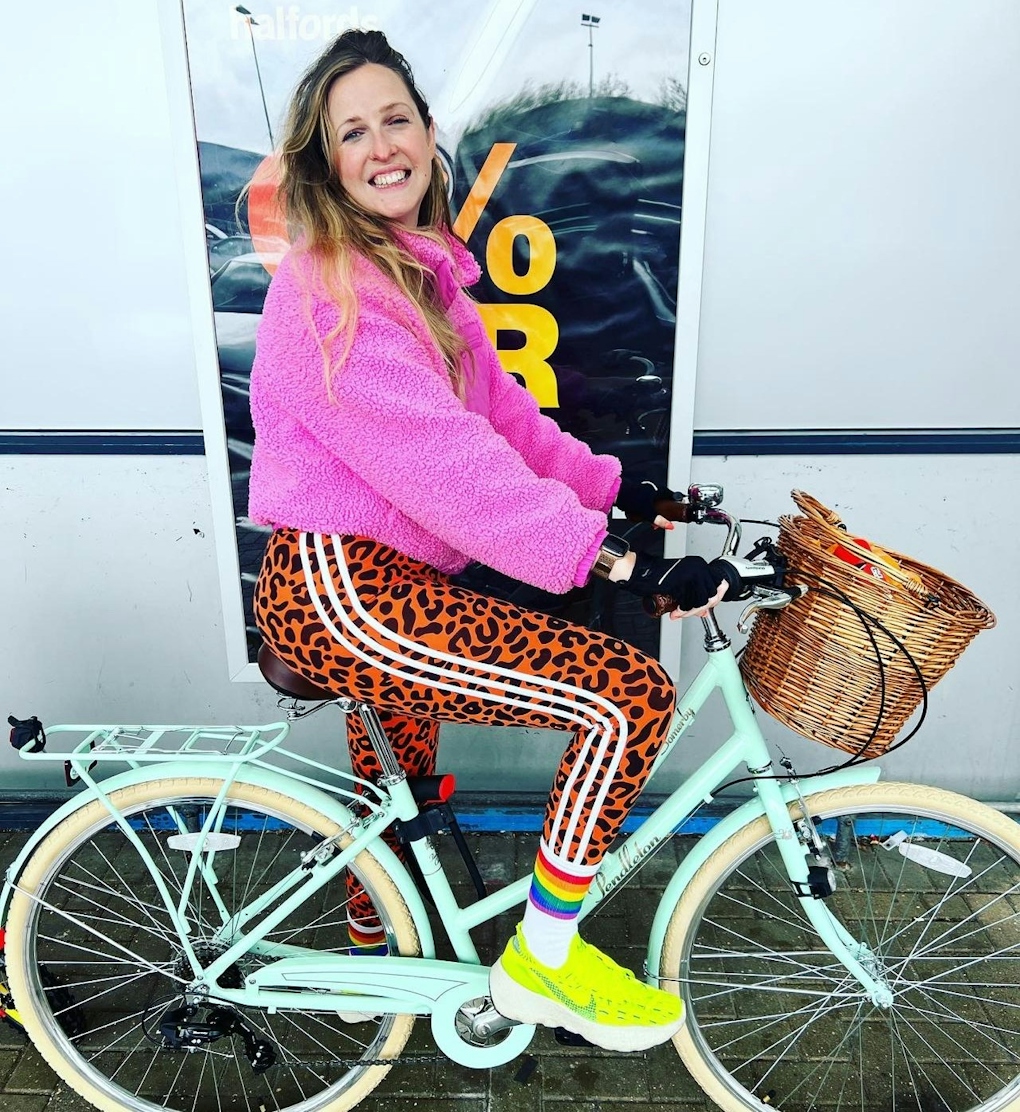
Amy Simpson, co-founder, Yours Sincerely: “Fashion has always been a passion for me and so intertwined with my career in PR. I remember sneaking into the fashion cupboard at my first agency to ‘borrow’ outfits for nights out; now, it’s more about choosing clothes that suit the occasion but also reflect the image I want to portray.
“I really don’t think dress codes exist as they used to; even our financial services clients no longer wear suits and, refreshingly, women don’t need to dress like men to be noticed!
“We don’t have a rulebook on dress code at Yours Sincerely; however, our guiding principle is to be authentic. I truly believe the team can dress appropriately for client meets, yet still with an edge that reflects their personality and allows them to be their true self at work.”
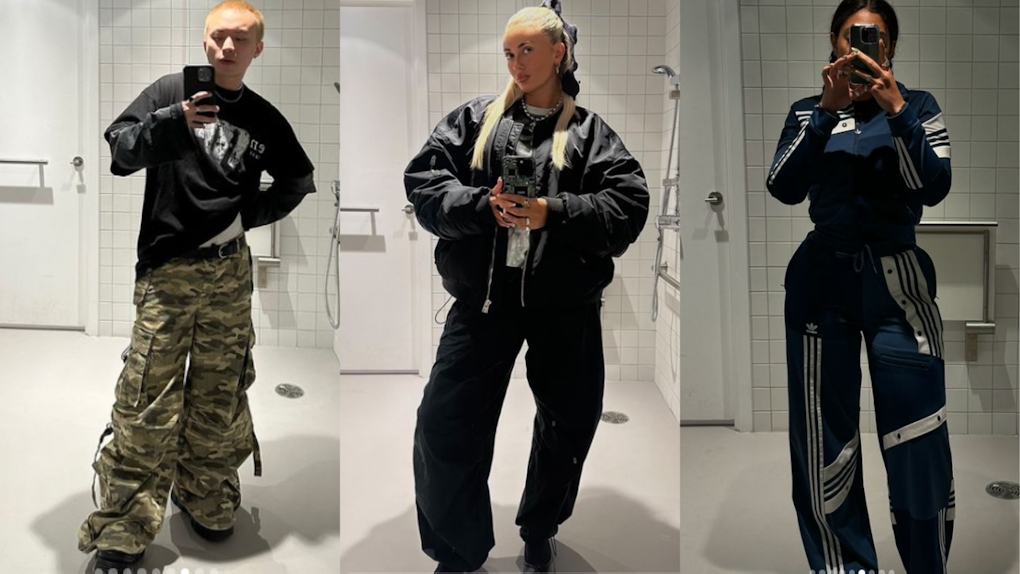
Rob O’Shea, managing director, Culted: “We’re very lucky that, with the sectors we work in and the brands we partner with, our team at Culted are able to embrace their own style. They show up to work every day dressed in a way that feels comfortable but also allows them to indulge their creative spirit. There are no ‘rules’ in that sense, but we’re very respectful when it comes to working with brands.
“When we’re out on productions, whether that’s on set or backstage at shows, we ensure that the talent and the brands are the focal point of any content or experience we create, not the Culted staff. So we’ll usually be found dressed all in black.”
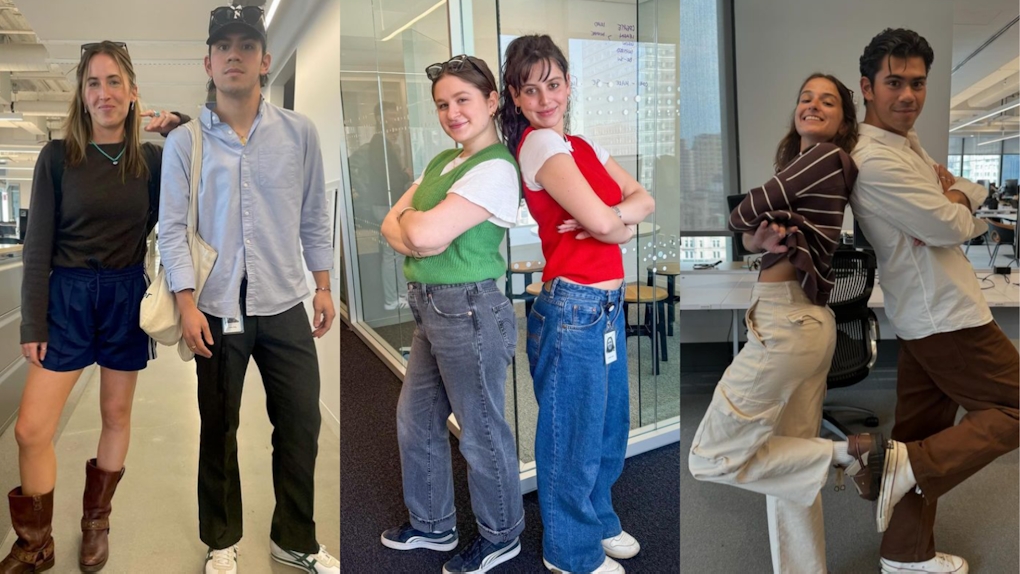
Lisa Bridgers, chief people officer, North America, VML: “While most agencies do not have formal dress code policies, we do expect our teams to dress appropriately for the occasion, whether that be client meetings, new business pitches or themed Thirsty Thursday! In general, I’d say we take a more ‘polished’ versus ‘formal’ approach and suits are a rarity.
“In New York, we see our people taking pride in how they dress and express themselves, truly making it part of the culture of the agency. In fact, a few anonymous VMLers created the Instagram account @vml_throwingfits to celebrate the unique sense of style we see in our New York office and, in doing so, ‘Saving Fidi from finance vests one lewk at a time.’
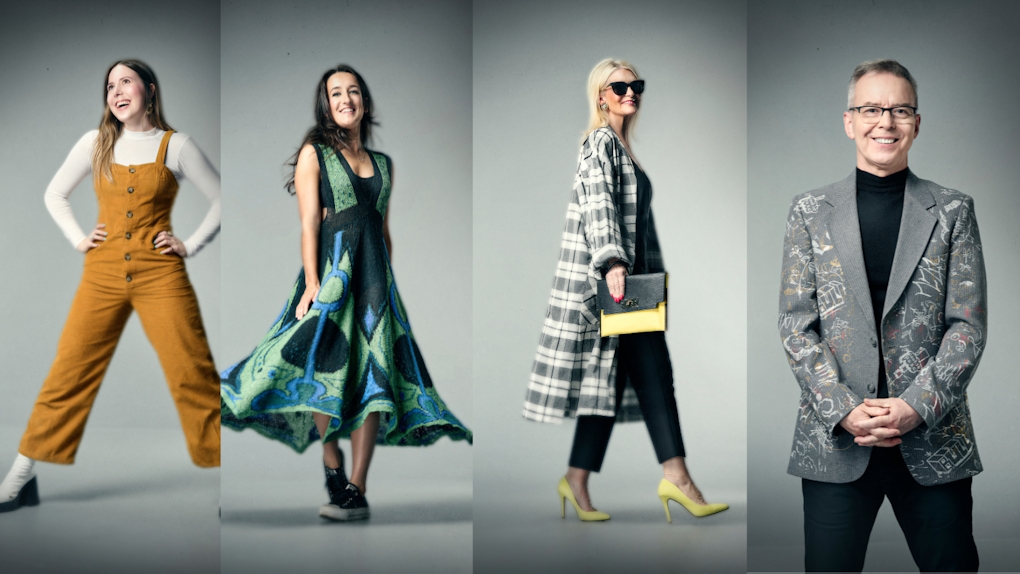
Pete Martin, director, Always Be Content: “When I started my first agency, we gave ourselves 10 rules. The ninth rule was, ‘Always wear a belt.’ It was meant as a joke (but not really). The idea was that if you took care of the details, the big things would be grand.
“That’s probably still true of ‘dressing for success.’ Back then, along with a fondness for wearing ties with denim shirts, we thought this attitude marked us out as snappy dressers. What it actually signaled was ‘self-important guys who work in the creative industries.’
“Every decade since has shown the dress codes that make the uniforms of our trade. The suits’ suits. The creative director’s bold eyewear. The art director’s white T-shirt and matching trainers. The copywriter’s humble jumper.
“The WFH years blew a hole in many of the traditional codes of self-presentation. And it’s now fine to be tatted and pierced plenty (but probably up to a point). Yet, I’d say the simple rules still apply. Dress appropriately. In fact, out of respect for your colleagues and clients, dress up, not down. If you want to be considered a professional, it still pays to look the part.”
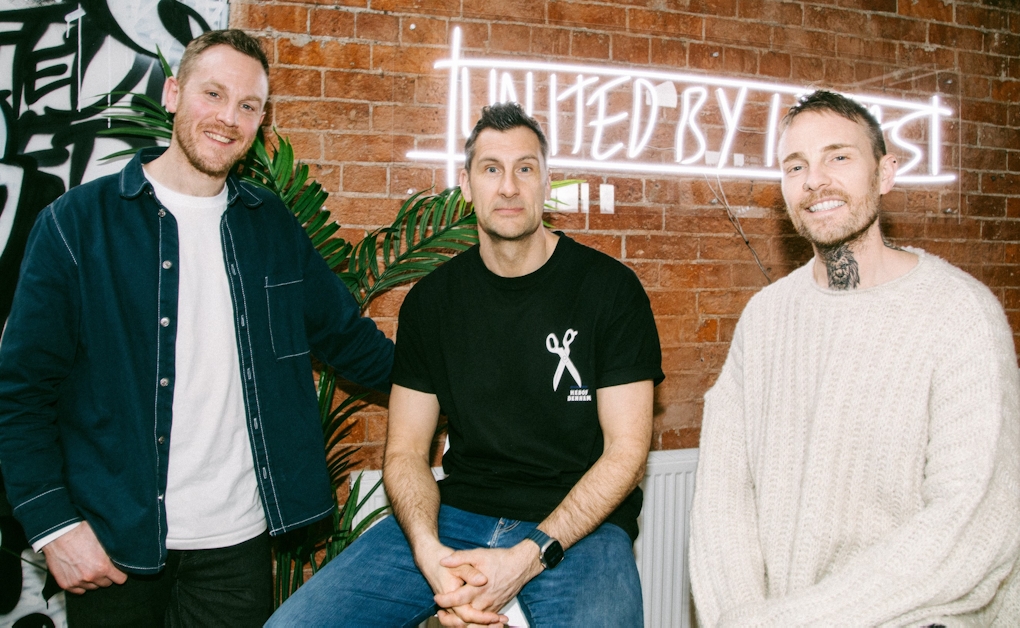
Chris Newell, co-founder & creative partner, Syn: “In today’s world, it should be acceptable for people to bring their true selves to the workplace without judgment or criticism. Dressing is a huge part of a person’s identity and we invite all of our team at Syn to be their authentic self – embracing individuality, allowing our people to be fully comfortable in their style, whether that’s tattoos, piercings, jeans, sneakers, baseball caps – or a suit.
“A person’s style doesn’t reflect their capability. We trust our people to show up in acceptable attire for the workplace that represents who they are and helps them feel their best so they can do their best. Corporate attire and a strict ‘no-show’ of tattooed skin is a disappearing tradition that signposts an old-school culture in today’s modern and progressive world.”
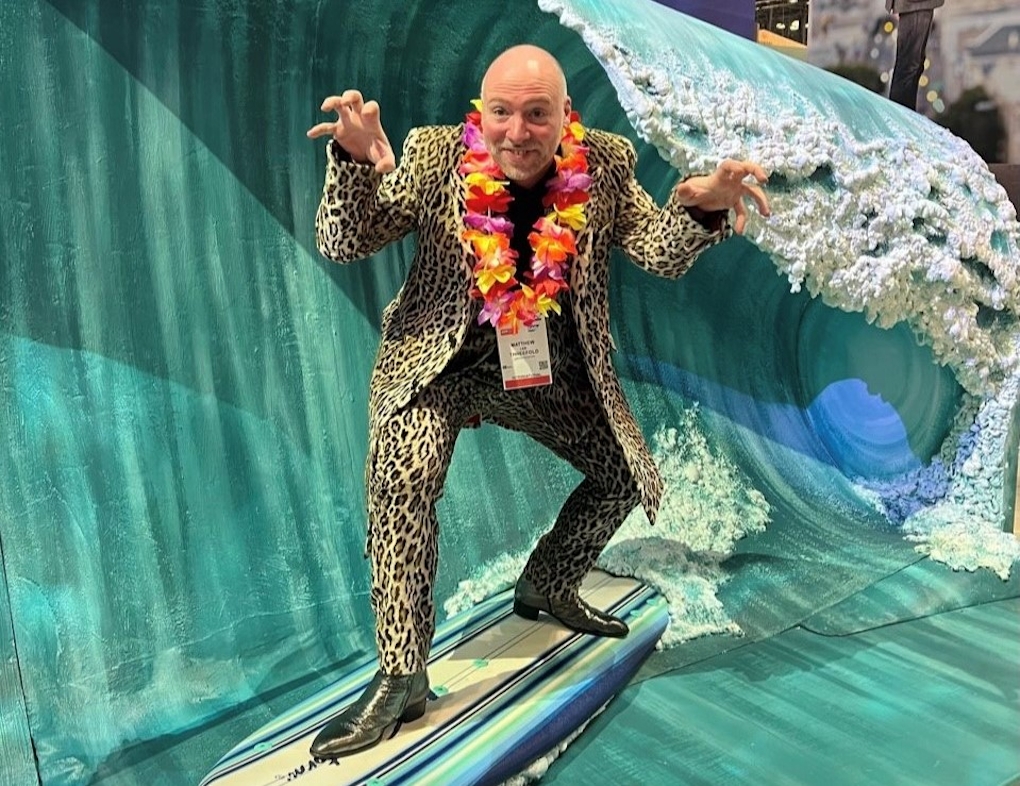
Matt Lee, co-founder and CGO, SMG: “Dress code, what’s that? Absolutely, I still wear suits, provided they are full animal print, camo or metallic. I was always taught to dress to the clients’ code, but does anyone have one any more? Whoops, I just found out that’s what our policy is! However, we care much more about if you feel welcome and part of the team, are passionate and can do your job than how you choose to dress.”
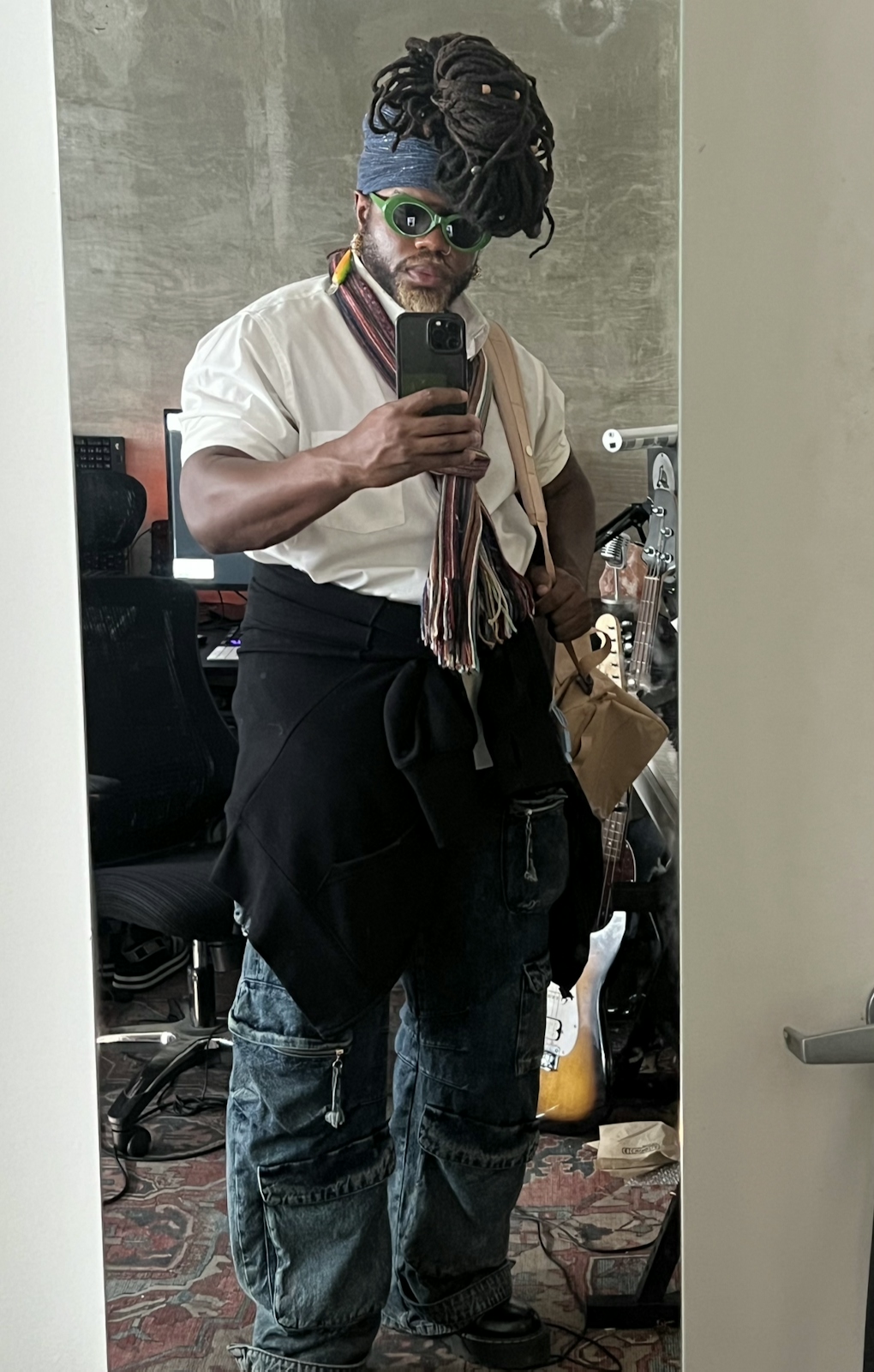
Craig Elimeliah, chief creative officer, Code and Theory: “When your founder starts with one T-shirt and the CEO prefers tattoo sleeves over actual ones, formal dress is clearly not a priority. In creative and marketing, authenticity trumps dress codes.
“Suits may still exist, but we don’t subscribe to that outdated formality. We expect our team to bring their unique selves, body art and all, into every interaction, whether in the office or with clients.
“Personal brand is everything here at Code and Theory. Clients don’t buy ideas; they buy people. Like Marcus Thompson (pictured above), stand out, be bold and bring your full self to the table.”
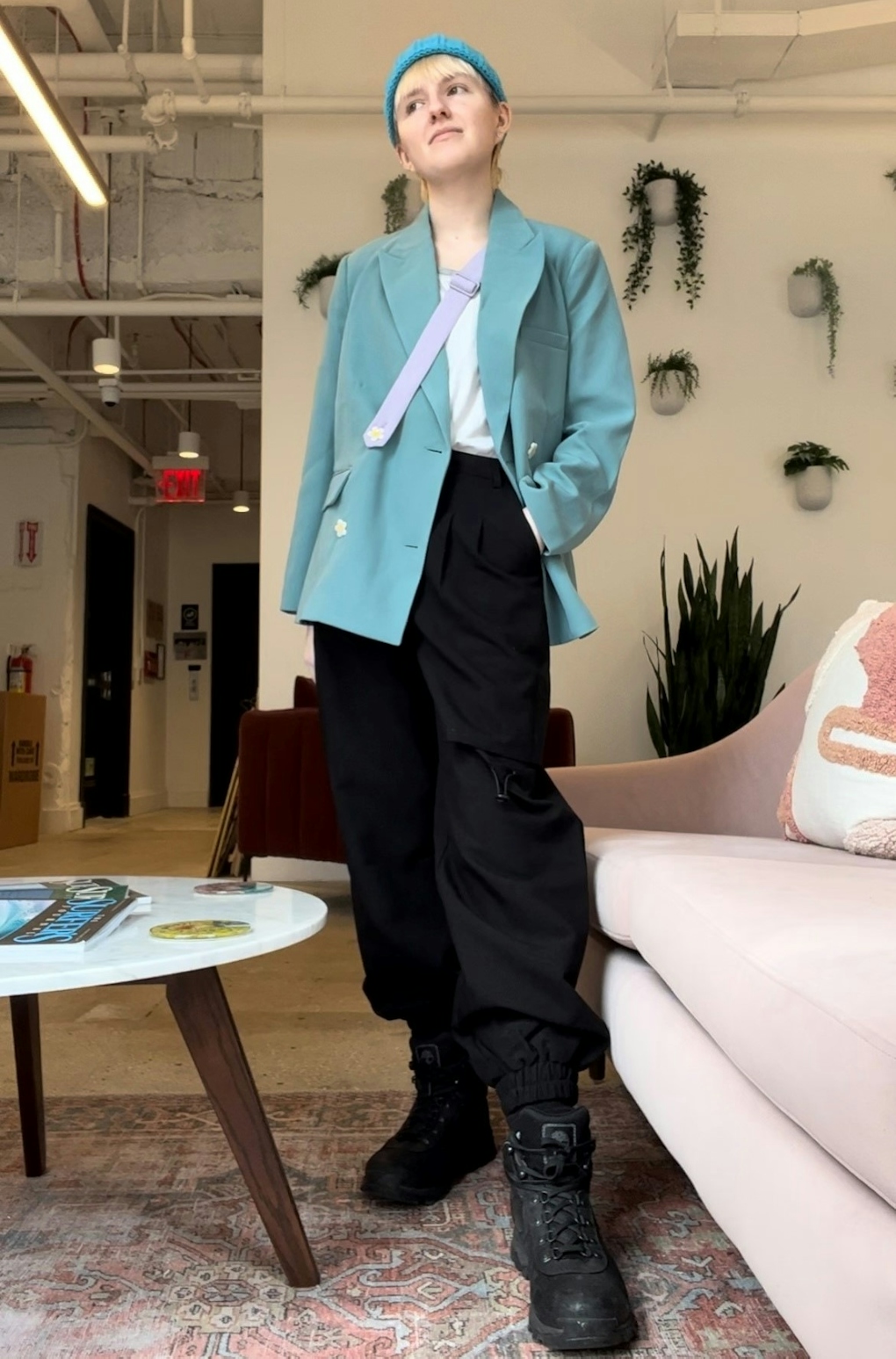
Stacey Zimmerman, managing director, SPCSHP: “The way we show up is as much a reflection of our commitment to the relationship as what we say in the room. Something as seemingly small as wearing the brand colors or reflecting elements we know are important to our partners shows we have done our homework and deeply care about the brand. It’s a sign of respect for the people in the room and an outward commitment to them.
“Our designer Fiona Schneider (pictured above) captures our agency perfectly, curating her style with bold forms and colors because she wants to leave a refreshing, positive impression on others.”
